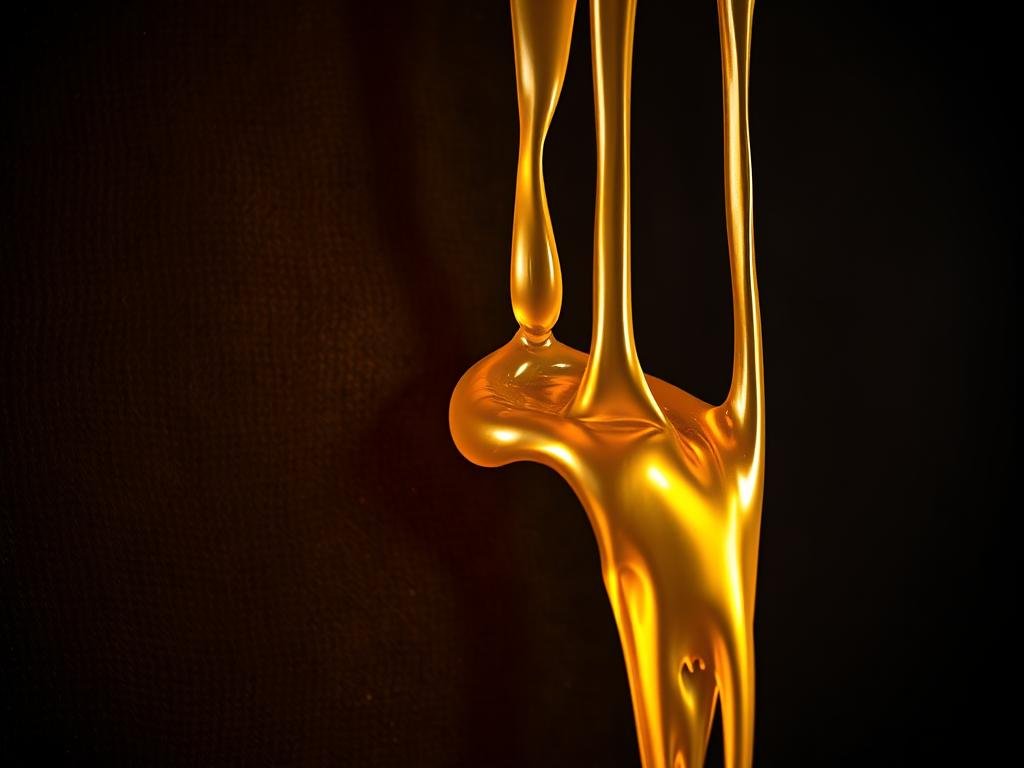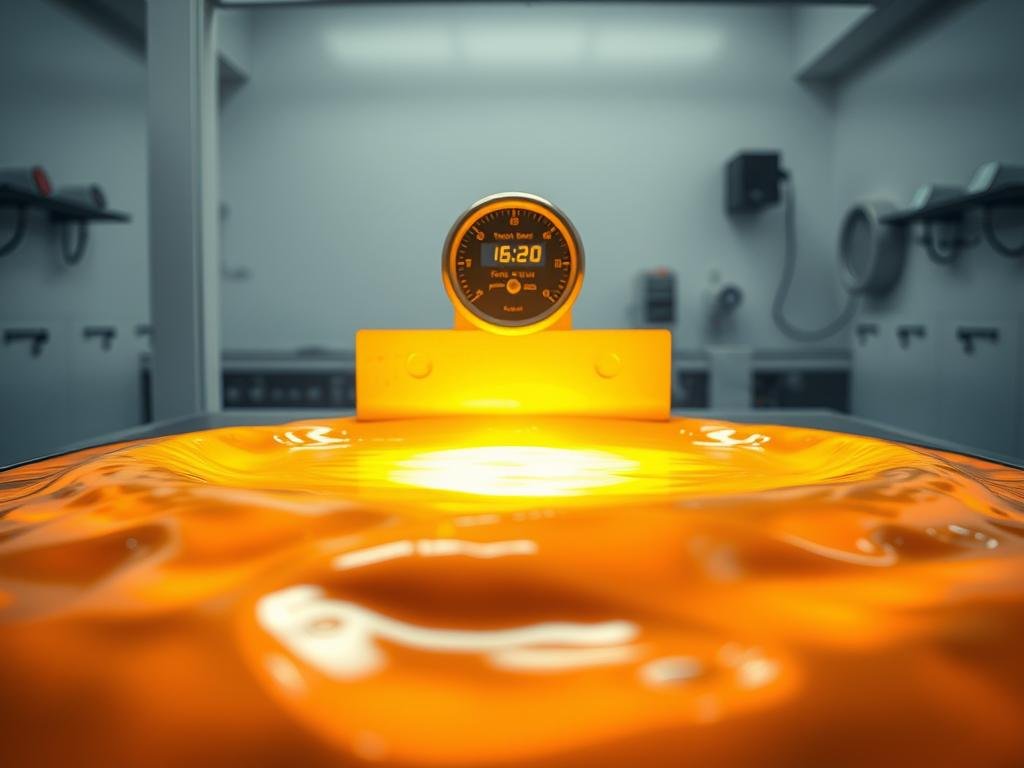فهم ال melting point of gold is essential for professionals in the jewelry and refining industries. Pure gold melts at 1,064 degrees Celsius (1,947 degrees Fahrenheit), a temperature that significantly influences its applications and workability.
This high درجة الحرارة makes gold one of the more stable precious metals, though its melting point is lower than that of metals like platinum or palladium. The melting point affects not only gold’s durability and uses in decorative and industrial contexts but also its purity assessment and verification methods.
طوال هذا المقال، سنستكشف أهمية نقطة انصهار الذهب، ومقارنته مع المعادن الأخرى، وأهمية التحكم الدقيق في درجة الحرارة عند العمل مع الذهب. من خلال فهم هذه الخصائص الأساسية، يمكن للمهنيين التعامل بشكل أفضل مع الذهب وتطبيقه في مختلف البيئات.
Understanding Gold’s Melting Point
Understanding the melting behavior of gold is essential for professionals in the field, as it directly impacts the processing, application, and quality of gold products. Gold’s melting point is a critical property that determines its usability in various contexts.
The Science Behind Gold’s Melting Temperature
Gold’s high melting point of 1,064°C is attributed to its atomic structure and strong bonding. At the molecular level, gold’s crystal structure remains stable until it reaches this temperature, at which point the bonds begin to break, and the metal transitions from a solid to a liquid state. This درجة انصهار is crucial for applications involving the casting or refining of gold.
Pure Gold vs. Gold Alloys: Melting Point Differences
Pure gold, or 24-karat gold, has a distinct melting point compared to gold alloys, which are mixed with other metals like silver, copper, or zinc. These alloys, used in jewelry making, have different melting characteristics. For instance, 14-karat gold melts at a lower temperature than pure gold, typically around 879°C (1,614°F). The addition of other metals lowers the melting point, affecting the workability and application of the alloy.

Gold’s Melting Point: Technical Specifications
Understanding the technical specifications of gold’s melting point is crucial for professionals in jewelry making and refining. Gold’s melting point is a fundamental property that influences various industrial processes.
درجة انصهار الذهب النقية الدقيقة
Pure gold melts at a precise temperature of 1,064 degrees Celsius (1,947 degrees Fahrenheit). This high melting point هي سمة تميز الذهب عن المعادن الأخرى وتلعب دورًا حاسمًا في تطبيقاته.

Physical Changes During the Melting Process
When gold is heated to its melting point, it undergoes significant physical changes. These include volume expansion and a change in color. The melting process involves the absorption of heat, known as the latent heat of fusion, which is crucial for the phase change from solid to liquid.
Measuring and Testing Gold’s Melting Point
Accurate measurement of gold’s melting point can be achieved through various methods, including differential scanning calorimetry and traditional furnace techniques. These methods require precise temperature control to ensure reliable results. The melting point test is also used to verify the purity of gold and detect counterfeit products.
How Gold’s Melting Point Compares to Other Precious Metals
Understanding how gold’s melting point compares to other precious metals is crucial for professionals in jewelry making and refining. Gold melts at 1,064°C, which is higher than silver’s melting point of 961°C but lower than copper’s 1,085°C. These differences have significant implications for various applications.
Gold vs. Silver and Copper
عند مقارنة الذهب بالفضة والنحاس، تظهر الفروقات في درجات الانصهار. يجعل انخفاض درجة انصهار الفضة من السهل التعامل معها في بعض التطبيقات، بينما تكون درجة انصهار النحاس الأعلى أقرب إلى درجة انصهار الذهب، مما يجعله عنصرًا سبائياً شائعًا. "يعتمد اختيار المعدن غالبًا على المتطلبات الخاصة للمشروع، بما في ذلك درجة الانصهار المرغوبة"، كما أشار خبراء الصناعة.
Gold vs. Platinum and Palladium
البلاتين والبالاديوم لهما نقاط انصهار أعلى من الذهب، حيث تبلغ ١٧٦٨°C و١٥٥٥°C على التوالي. هذا يعني أن العمل مع هذه المعادن يتطلب معدات وتقنيات متخصصة. كما تؤثر نقاط الانصهار الأعلى للبلاتين والبالاديوم على استخداماتهما في المجوهرات والصناعات.
Practical Implications of These Differences
الفروق في درجات الانصهار بين هذه المعادن الثمينة لها تداعيات عملية على عمليات التصنيع، بما في ذلك الصب، واللحام، وتقنيات الإصلاح. فهم هذه الاختلافات يساعد المهنيين على اختيار المعدن المناسب للتطبيقات المحددة بناءً على المتطلبات الحرارية، مما يؤثر في النهاية على الجوانب الاقتصادية للعمل مع المعادن الثمينة المختلفة.
العوامل التي تؤثر على نقطة انصهار الذهب
The melting point of gold is influenced by a range of factors, including impurities, pressure, and its crystalline structure. Understanding these factors is crucial for professionals working with gold, as they can significantly affect the metal’s behavior during heating.
تأثير الشوائب وعناصر السبائك
Impurities and alloying elements can significantly alter gold’s melting point. For instance, the addition of silver or copper can lower the melting point of gold. عناصر السبائك like zinc and nickel also change gold’s melting characteristics. The relationship between alloy composition and melting point is quantifiable, allowing professionals to predict and adjust for these changes.
| عنصر السبائك | تأثير على نقطة الانصهار |
|---|---|
| فضة | Lowers melting point |
| نحاس | Lowers melting point |
| الزنك | Alters melting characteristics |
الضغط وظروف البيئة
الضغط هو عامل حاسم آخر يمكن أن يؤثر على درجة حرارة انصهار الذهب. في ظروف الضغط العالي، قد يذوب الذهب عند درجات حرارة مختلفة قليلاً. يمكن أن تؤثر الظروف البيئية، مثل تركيب الغلاف الجوي والرطوبة، أيضًا على عملية الانصهار.
العوامل الهيكلية والبلورية
The crystal structure of gold plays a significant role in determining its melting behavior. Grain boundaries can act as weak spots where melting starts more easily. Additionally, particle size, particularly in gold powders or nanoparticles, can significantly alter the observed melting point.
By understanding these factors, professionals can better account for variations in gold’s melting point during different applications, ensuring more accurate and reliable results.
Gold’s Melting Point in Jewelry Making

Understanding gold’s melting point is essential for jewelry designers, as it directly impacts the manufacturing process and final product quality. Gold’s melting point is 1,064°C (1,947°F), allowing jewelers to melt and shape it while retaining its quality.
تقنيات الصب والنمذجة
Jewelry makers use various casting techniques, including lost-wax casting and centrifugal casting, to create intricate designs. Each method requires careful consideration of gold’s melting characteristics to achieve optimal results.
Working with Different Karat Golds
Different karat golds have distinct melting points, with lower karat golds generally melting at lower temperatures than pure gold. For instance, 10K gold melts at a lower temperature than 22K gold. Jewelers must adjust their techniques accordingly to work with different gold alloys.
التحكم في درجة الحرارة في تصميم المجوهرات
التحكم الدقيق في درجة الحرارة ضروري في صناعة المجوهرات، حيث يؤثر مباشرة على جودة المنتج النهائي. يستخدم الصاغة معدات متخصصة للحفاظ على درجات حرارة مثالية، لضمان إذابة الذهب وتشكيله بشكل صحيح.
عمليات تكرير الذهب ومتطلبات الذوبان

لتنقية الذهب بشكل فعال، من الضروري فهم سلوكه عند الذوبان تحت ظروف مختلفة. نقطة انصهاره تعتبر عاملاً حاسماً في عملية التكرير، وتؤثر على التقنيات والمعدات المستخدمة.
عملية الصهر
تشغيل المصهر ينطوي على تسخين خام الذهب في فرن حتى يذوب عند درجات حرارة تتجاوز 1064°C، مما يسمح للشوائب بالطفو بعيدًا وترك الذهب المصهور خلفه. دور المواد المضافة في هذه العملية حاسم لأنها تساعد في إدارة نقطة انصهار الذهب العالية، مما يضمن استخراجًا فعالًا.
الطرق الأخرى للتنقية والتكرير
التحليل هو تقنية قديمة تستخدم خصائص انصهار الذهب لفصله عن المعادن الأخرى. يُسخن الذهب غير النقي بين 1100 و1200 درجة مئوية في طبق مسامي، مما يؤدي إلى أكسدة الشوائب وإنتاج ذهب أنقى. تشمل الطرق التقليدية الأخرى عمليات ميلر وولفويل، كل منها يتطلب درجات حرارة محددة.
تقنيات التكرير الحديثة
المصافي الحديثة تستخدم تقنيات موفرة للطاقة مثل الأفران التحريضية لتقليل استهلاك الطاقة مع الحفاظ على درجات الحرارة العالية اللازمة لتكرير الذهب. تساعد هذه التطورات في إدارة التأثير البيئي لتكرير الذهب من خلال تقليل متطلبات الطاقة المرتبطة بوصول إلى نقطة انصهار الذهب.
الاستنتاج: إتقان نقطة انصهار الذهب للتطبيقات المهنية
فهم سلوك ذوبان الذهب ضروري لتحقيق الدقة في صناعة المجوهرات والتكرير. يذوب الذهب عند 1064 درجة مئوية (1947 درجة فهرنهايت)، وهي درجة حرارة تؤثر بشكل كبير على معالجته وتطبيقه عبر مختلف الصناعات.
نقطة انصهار الذهب هي عامل حاسم يميزه عن المعادن الثمينة الأخرى مثل الفضة والنحاس والبلاتين. على سبيل المثال، تذوب الفضة عند درجة حرارة أقل تبلغ 962°C (1764°F)، بينما يذوب البلاتين عند درجة حرارة أعلى بكثير تبلغ 1,768°C (3214°F). هذا الاختلاف في نقاط الانصهار يؤثر على التقنيات المستخدمة في صناعة المجوهرات وعمليات التكرير.
تؤثر عدة عوامل على نقطة انصهار الذهب، بما في ذلك نقاوته، وعناصر السبيكة، والاعتبارات الهيكلية. يمكن أن يؤدي إضافة معادن أخرى إما إلى زيادة أو تقليل نقطة انصهاره، مما يؤثر على قابليته للاستخدام في تطبيقات مختلفة. فهم هذه العوامل ضروري لتعظيم الكفاءة وتحقيق نقاوة عالية في تكرير الذهب.
في صناعة المجوهرات، يتيح معرفة درجة انصهار الذهب إنشاء تصاميم معقدة ومتينة. علاوة على ذلك، تستفيد التقنيات الناشئة من المعرفة الدقيقة بسلوك انصهار الذهب لتطوير تقنيات وتطبيقات جديدة، خاصة في الإلكترونيات حيث مقاومة الذهب للحرارة وموصلية الكهرباء لا تقدر بثمن.
إتقان علم نقطة انصهار الذهب ضروري للمهنيين العاملين مع هذا المعدن الثمين. من خلال تطبيق هذه المعرفة، يمكن للمهنيين تحقيق نتائج أفضل ودفع الابتكارات في مجالاتهم المختلفة.
